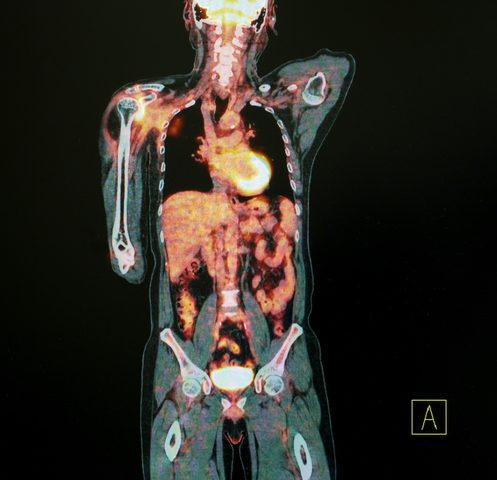A new imaging agent for use in positron emission tomography (PET) is better than conventional imaging at detecting cancer location and spread in prostate cancer patients suspected of cancer recurrence, a study shows.
The study, “Advanced Prostate Imaging of Recurrent Cancer after Radiation Therapy (PICs): Interim Results of a Prospective, Multi-Center Trial,” was presented at the American Society for Radiation Oncology 2018 Annual Meeting.
Radical radiotherapy is a nonsurgical treatment for localized prostate cancer that uses high-energy X-rays. Following treatment, however, about 15-40 percent of patients see their PSA levels rise, a condition known as biochemical recurrence, and a sign that the cancer has returned.
Before deciding how to manage patients, doctors normally conduct several imaging exams that provide some insight on the size of the tumor and whether it has spread to other areas of the body. Smaller tumors, however, may sometimes be missed by standard exams.
In this study, a group of researchers tested whether a new imaging agent could improve the detection of prostate cancer and the management of these patients.
The agent, a radiotracer called [18F]-DCFPyL, targets the prostate-specific membrane antigen (PSMA) — a protein whose levels are increased in prostate cancer patients — and is used in PET imaging.
PET imaging uses small amounts of radioactive materials, called radiotracers, along with a special camera and computer to help evaluate organ and tissue function. Most importantly, a PET scan can help identify areas of prostate cancer recurrence that are not detected with conventional computed tomography (CT) scans.
The study (NCT02793284) recruited prostate cancer patients followed at four cancer centers in Ontario who experienced biochemical recurrence after receiving radiotherapy. Participants, at a median age of 75 years, had seen their PSA levels increase a median of 5.5 years after radiation therapy.
Most patients (69%) had received external radiation therapy, while the remaining received brachytherapy, a type of radiation therapy where small radioactive material is inserted into the prostate to kill cancer cells.
In the trial, patients received a conventional CT scan of the thorax, abdomen, and pelvis, a bone scan, and magnetic resonance imaging (MRI) of the pelvis, followed by a [18F]-DCFPyL PET scan.
Cancer recurrence was confirmed in 94% of patients by both conventional imaging and PET. However, PET scans performed better at detecting metastases than conventional imaging — 35% versus 29%.
Also, while conventional imaging detected cancer recurrence confined to the prostate in 21 of patients, additional PET scans identified additional metastasis in four of these cases.
After examining the PET scans, physicians changed their management treatment plan in 49% of the participants — including the addition of salvage radiation therapy (SRT), androgen deprivation therapy, biopsy, and high-intensity focused ultrasound treatment.
These findings suggest that in prostate cancer patients suspected of cancer recurrence, “[18F]-DCFPyL PET/CT detects additional sites of disease that result in changes in management compared to CI [conventional imaging],” according to the researchers.

